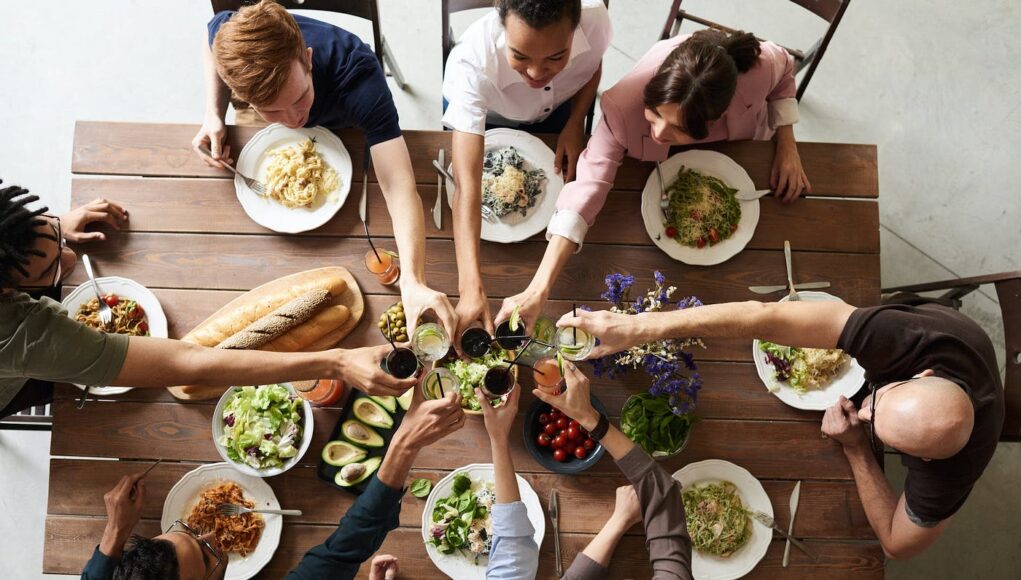Traveling is not just about visiting new places; it’s about experiencing the culture, and one of the most delicious ways to do that is through food.
Culinary delights can tell stories of history, tradition, and innovation, making every meal an adventure. From street food stalls to Michelin-starred restaurants, the world is filled with gastronomic treasures waiting to be discovered. This blog post delves into the art of meal, exploring exquisite dishes and iconic food destinations across the globe. Whether you’re a seasoned foodie or just starting your culinary journey, this guide will provide insights, tips, and inspiration for your next gastronomic adventure.
1. The Street Food Scene: A Global Adventure
Street food is often the heart and soul of a city, offering authentic flavors at affordable prices. Cities like Bangkok, Mexico City, and Istanbul are renowned for their vibrant street food cultures. In Bangkok, for instance, a plate of Pad Thai from a street vendor can cost as little as $1.50, while in Mexico City, tacos al pastor can be enjoyed for about $1 each. The experience of eating street food is not just about the taste; it’s about the atmosphere, the hustle and bustle of the streets, and the chance to interact with locals.
Travelers should consider taking a street food tour to get the most out of their culinary exploration. These tours often include tastings at multiple vendors, providing a well-rounded experience. For example, a guided street food tour in Bangkok can cost around $40, which includes several tastings and insights from a local guide.
2. Fine Dining: A Taste of Luxury
For those looking to indulge, fine dining offers an unparalleled experience. Cities like Paris, Tokyo, and New York boast some of the best restaurants in the world. In Paris, a meal at a Michelin-starred restaurant can range from $100 to $300 per person, depending on the menu and wine pairings. The ambiance, presentation, and service are all part of the experience, making it a memorable occasion.
Tokyo is home to numerous Michelin-starred sushi restaurants, where a meal can be an art form. Sushi Saito, for instance, is known for its exquisite sushi and can charge upwards of $500 for a meal. Reservations are often required months in advance, highlighting the exclusivity of such dining experiences.
3. Culinary Classes: Learn and Taste
One of the best ways to immerse oneself in a culture is through its cuisine. Participating in a cooking class can provide hands-on experience and a deeper understanding of local ingredients and techniques. In Italy, for example, cooking classes in Tuscany often include a visit to a local market, where participants can select fresh produce for their dishes.
Prices for cooking classes vary widely, but travelers can expect to pay around $80 to $150 for a half-day class, which typically includes a meal and wine. Not only do these classes teach valuable skills, but they also create lasting memories and connections with fellow food lovers.
4. Food Markets: A Feast for the Senses
Food markets are a treasure trove of culinary delights, showcasing local produce, artisanal goods, and street food. Markets like La Boqueria in Barcelona and Borough Market in London are must-visit destinations for food enthusiasts. At La Boqueria, visitors can sample everything from fresh seafood to delectable pastries, while Borough Market offers a wide range of international cuisines.
Exploring food markets allows travelers to taste a variety of dishes without breaking the bank. A budget of $20 can easily provide a satisfying meal with multiple tastings. Additionally, markets often feature cooking demonstrations and workshops, offering insights into local culinary traditions.
5. Wine and Dine: Pairing Culinary Delights with Local Wines
No culinary journey is complete without exploring the world of wine. Regions like Bordeaux in France, Napa Valley in California, and Tuscany in Italy are famous for their vineyards and wine tours. A wine tasting experience can range from $20 to $100, depending on the vineyard and the number of wines sampled.
Many wineries also offer food pairings, allowing guests to enjoy local dishes alongside their wines. For example, a wine and cheese pairing in Bordeaux can elevate the tasting experience, showcasing the unique flavors of the region. Booking a wine tour in advance is recommended, especially during peak seasons, to secure a spot and ensure a comprehensive experience.
6. Iconic Dishes Around the World
Every country has its signature dishes that reflect its culture and history. In India, for instance, the rich and aromatic biryani is a must-try, often enjoyed with raita and naan. In Japan, ramen has become a global sensation, with countless variations available in cities like Tokyo and Osaka. Each dish tells a story, and tasting these iconic meals is essential for any traveler.
Travelers should research local specialties before visiting a destination to ensure they don’t miss out on must-try dishes. Many cities also offer food festivals throughout the year, providing an excellent opportunity to sample a variety of local cuisines in one place.
7. Sustainable Eating: A Growing Trend
As awareness of environmental issues grows, many travelers are seeking sustainable dining options. Restaurants that focus on farm-to-table practices, organic ingredients, and ethical sourcing are becoming increasingly popular. Cities like San Francisco and Copenhagen are at the forefront of this movement, with numerous eateries committed to sustainability.
Dining at a sustainable restaurant may come at a premium, with prices typically ranging from $30 to $100 per person. However, the experience of knowing that your meal supports local farmers and reduces environmental impact can be well worth it. Look for restaurants that highlight their sourcing practices on their menus or websites for a more informed dining choice.
Conclusion
The art of meal is a journey that transcends borders and cultures. Exploring culinary delights allows travelers to connect with the essence of a destination, creating unforgettable memories. Whether indulging in street food, dining at a Michelin-starred restaurant, or participating in a cooking class, each experience adds a unique flavor to the adventure. As you embark on your next culinary journey, remember to savor every bite and embrace the stories behind the dishes.
Frequently Asked Questions
What’s the best time of year to visit food destinations?
The best time to visit culinary hotspots often depends on local harvest seasons and food festivals. For example, fall is ideal for visiting wine regions like Napa Valley, while summer is perfect for enjoying fresh produce at farmers’ markets. Researching local events and seasonal specialties can enhance the culinary experience.
How much should I budget for this trip?
Budgeting for a culinary trip varies widely based on destination and dining preferences. On average, travelers should allocate around $50 to $150 per day for meals, including street food, casual dining, and occasional fine dining experiences. Additional costs for cooking classes, wine tours, and food tours should also be considered.
What should I pack for a culinary trip?
Pack comfortable clothing and shoes for walking and exploring food markets. A reusable water bottle is essential for staying hydrated, and a small notebook can be handy for jotting down favorite dishes and recipes. If participating in cooking classes, check if specific attire is required.
Are there any safety concerns when trying street food?
While street food can be safe and delicious, travelers should exercise caution. Look for vendors with high turnover, as this indicates freshness. Avoid raw or undercooked foods, and ensure that food is cooked to order. Drinking bottled water is also advisable in many countries to avoid foodborne illnesses.
How can I find local dining recommendations?
Utilize travel apps, food blogs, and social media platforms to discover local dining options. Websites like Yelp and TripAdvisor offer reviews and ratings, while Instagram can provide visual inspiration. Engaging with locals and asking for recommendations can also lead to hidden gems.
What are some local customs related to dining?
Dining customs vary by culture. In Japan, for instance, it is customary to say “itadakimasu” before a meal as a sign of gratitude. In Italy, tipping is not mandatory, but rounding up the bill is appreciated. Researching local dining etiquette can enhance the experience and show respect for the culture.
How can I make reservations for popular restaurants?
Many popular restaurants offer online reservations through their websites or apps. It’s advisable to book well in advance, especially for Michelin-starred establishments. Calling the restaurant directly can also be effective, particularly for last-minute reservations.
What are some insider tips for enjoying culinary experiences?
Consider joining food tours led by locals to gain insights into the culinary scene. Be open to trying new dishes and flavors, and don’t hesitate to ask locals for their favorite spots. Lastly, take your time to savor each meal, as dining is often a social and leisurely experience in many cultures.










